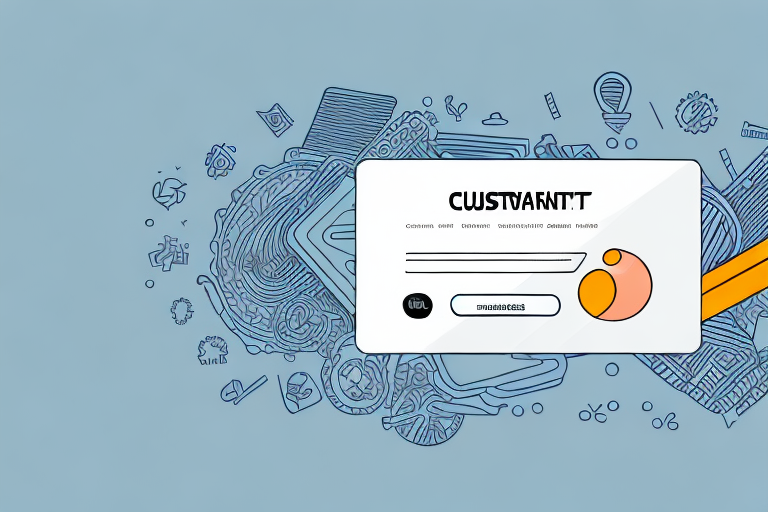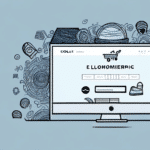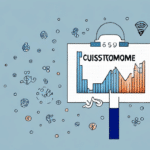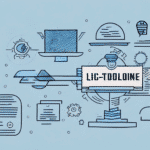How to Create Loyalty Programs That Drive Customer Retention
As a business owner, you understand the importance of having loyal customers. Not only do they keep coming back to purchase from you, but they also spread word-of-mouth advertising for your brand. One effective way to improve customer loyalty is through the use of loyalty programs. In this article, we will discuss the key components of designing and implementing successful loyalty programs that drive customer retention.
The Importance of Customer Retention and Loyalty Programs
Many businesses focus on attracting new customers, but retaining existing customers is just as crucial. According to Bain & Company, acquiring a new customer can cost up to five times more than retaining an existing one. Investing in loyalty programs can help you keep your existing customers and drive repeat business.
Loyal customers are more likely to refer your business to their friends and family, leading to new customers without the added cost of marketing and advertising. Additionally, loyal customers tend to spend more and make larger purchases than new customers. By offering rewards and incentives through a loyalty program, you can encourage your customers to continue doing business with you and increase their overall lifetime value to your company.
The Benefits of Offering Loyalty Programs
Customer Retention and Repeat Business
Offering loyalty programs provides several benefits to businesses. Firstly, it incentivizes customers to come back and purchase from you instead of your competitors. Secondly, it can help you establish your brand as a preferred choice among customers.
Valuable Customer Insights
Loyalty programs provide valuable data on customer behaviors and purchasing patterns, which can help you make informed decisions about your marketing strategies and inventory management.
Increased Customer Satisfaction
By offering rewards and exclusive perks to loyal customers, you make them feel appreciated and valued. This can lead to positive word-of-mouth marketing and referrals, attracting new customers to your business.
Understanding Your Target Audience and Their Needs
Before designing your loyalty program, identify what your target audience wants and needs. Conduct research, analyze data, and gather feedback from your existing customers to determine the type of rewards that appeal to them. This step is crucial because offering irrelevant and unattractive rewards leads to poor participation rates and low customer retention.
Gathering Customer Feedback
One way to gather feedback from your customers is to conduct surveys or focus groups. These methods allow you to ask specific questions about what rewards they would like to see and what motivates them to participate in loyalty programs.
Analyzing Customer Data
Analyze customer data such as purchase history and demographics to gain insights into their preferences and behaviors.
Competitive Analysis
Consider the competitive landscape and what other loyalty programs are offering. Find a balance between unique and desirable rewards to stand out in the market and retain customers.
Designing an Effective Loyalty Program
Simplicity and Clarity
Keep your loyalty program simple and easy to understand. Customers should know what rewards they can earn and how to earn them. Avoid adding too many tiers or complex rules that can intimidate or confuse customers.
- Effective rewards include discounts, free products or services, exclusive events, and early access to new products or services.
Regular Communication
Regularly communicate with your customers about the benefits of your loyalty program through email newsletters, social media posts, or in-store signage.
Referral Incentives
Consider offering special promotions or bonuses for customers who refer their friends or family to your loyalty program.
Types of Loyalty Programs and Choosing the Right One
Points-Based Programs
Points-based programs are effective for retail businesses, allowing customers to earn points for each purchase that can be redeemed for rewards.
Tiered Programs
Tiered programs offer different levels of rewards based on customer spending or engagement, encouraging customers to strive for higher tiers.
Cashback Programs
Cashback programs reward customers with a percentage of their purchase amount back, which is appealing for service-based businesses.
Coalition Programs
Coalition programs allow customers to earn rewards across multiple businesses, offering a wider range of rewards but requiring more complex management.
Setting Achievable Goals and Measuring Success
Defining Goals
Identify what you want to achieve with your loyalty program, such as increasing customer lifetime value, improving customer satisfaction, or increasing average order value.
Tracking Key Performance Indicators (KPIs)
- Participation rates
- Redemption rates
- Customer satisfaction ratings
Track these KPIs to measure the program's success.
SMART Goals
Ensure your goals are Specific, Measurable, Attainable, Relevant, and Time-bound to stay focused and track progress effectively.
Customer Feedback
Gather feedback through surveys, focus groups, or other forms to gain insights into what is working well and what needs improvement.
Promoting Your Loyalty Program
Marketing Strategies
Utilize various marketing and advertising strategies such as email marketing, social media marketing, and in-store promotions to raise awareness of your program and encourage participation.
Referral Marketing
Encourage existing customers to refer their friends and family to your business by rewarding them with bonus points or discounts.
Exclusive Offers
Create exclusive offers and promotions for your loyalty program members, including early access to sales, special discounts, or free gifts with purchase.
Building a Community Around Your Brand
Customer Engagement
Encourage customers to connect with your brand through social media, forums, or events to strengthen loyalty and foster brand advocates.
Exclusive Perks
Offer exclusive perks or rewards to loyalty program members, such as early access to new products, personalized discounts, or special events.
Maintaining Customer Loyalty Over Time
Ongoing Engagement
Maintain customer engagement by refreshing your rewards offerings, personalizing rewards, and sending regular communications about program updates and new rewards.
Exceptional Customer Service
Provide exceptional customer service by responding promptly to inquiries and complaints, offering solutions, and exceeding customer expectations to build trust and loyalty.
Continuous Feedback
Regularly gather feedback through surveys, focus groups, or social media listening to understand customer needs and preferences and make informed improvements to your loyalty program.
Common Mistakes to Avoid in Loyalty Program Design
Irrelevant Rewards
Avoid offering rewards that do not resonate with your target audience, as this can lead to poor participation and retention rates.
Complex Program Structure
Keep your program structure simple and user-friendly to prevent customer frustration and confusion.
Difficult Redemption Process
Ensure that redeeming rewards is straightforward and hassle-free for customers to enhance their satisfaction and participation.
Inconsistent Communication
Consistently communicate program updates and benefits to keep customers informed and engaged.
Neglecting Audience Understanding
Understand what motivates your customers and what types of rewards they value most to tailor your program effectively.
Lack of Program Tracking
Regularly monitor program metrics such as customer engagement, redemption rates, and ROI to optimize your loyalty program.
Case Studies of Successful Loyalty Programs
Sephora’s Beauty Insider Program
Sephora’s Beauty Insider program offers tiered rewards that cater to different levels of customer spending, providing personalized rewards and exclusive experiences.
Starbucks Rewards
Starbucks Rewards reward customers for every purchase, offering perks like free drinks, exclusive offers, and early access to new products.
Amazon Prime
Amazon Prime offers free shipping, exclusive deals, and access to streaming services for a yearly fee, boasting millions of members worldwide.
Delta SkyMiles
The Delta SkyMiles program rewards frequent flyers with miles that can be redeemed for flights, upgrades, and other travel perks.
Incorporating Customer Feedback to Improve Your Loyalty Program
Incorporating feedback from your customers is crucial for a successful loyalty program. Use customer feedback to improve your program over time by refining reward offerings, simplifying program structure, or enhancing program communication. This demonstrates your commitment to your customers and helps improve their overall experience with your brand.
In conclusion, loyalty programs are an effective strategy for driving customer retention. By following the key components outlined in this article, your business can design and implement an effective loyalty program that keeps customers coming back and strengthens their connection with your brand.




















